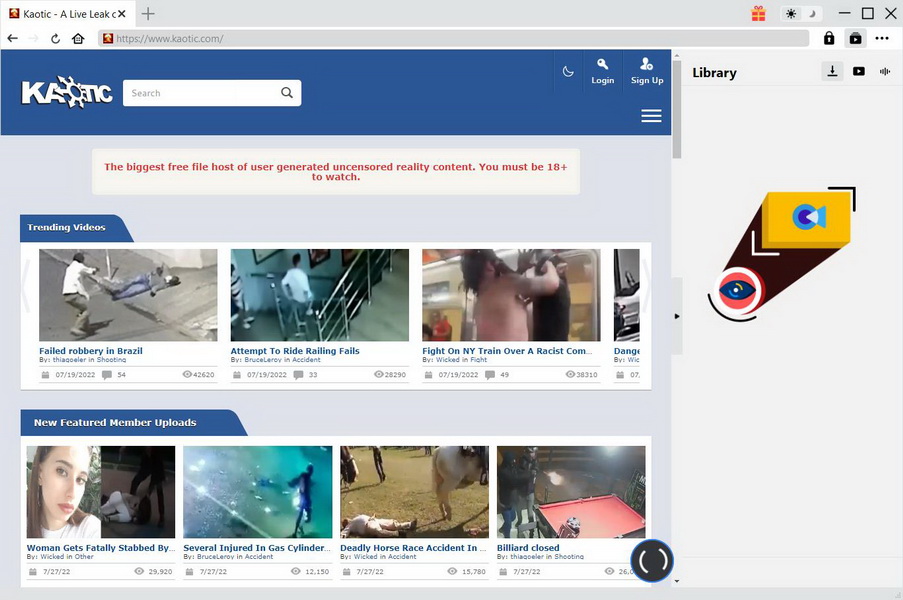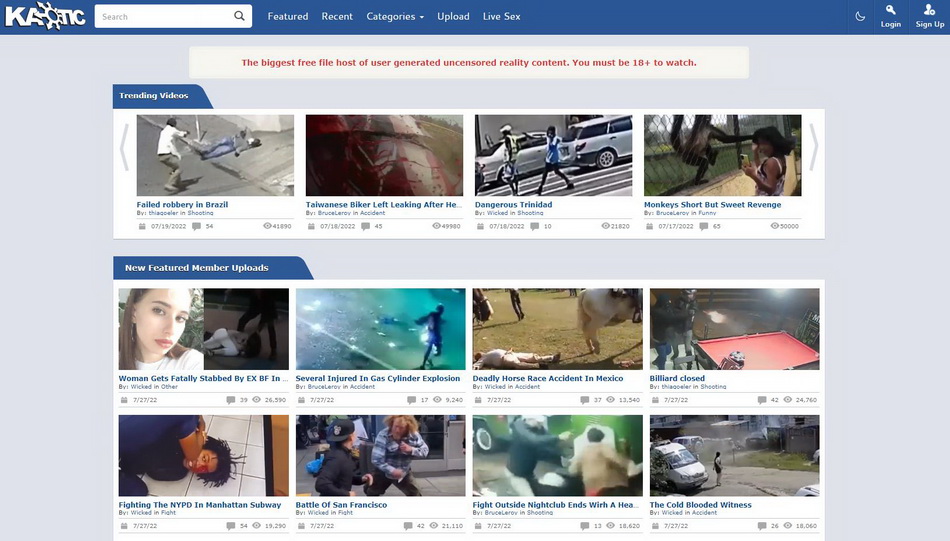Graphic Content: Explore Extreme Reality & Uncensored Videos
Is the pursuit of truth, no matter how brutal, a necessary evil? The exploration of "unfiltered reality," particularly in the context of violence and death, demands a critical examination of its purpose, impact, and ethical implications.
The digital landscape has birthed a realm of content that dares to confront the darkest aspects of human existence. Platforms and websites, often operating in the shadows, curate and disseminate videos depicting graphic violence, true crime, and acts of terror. These spaces, driven by a complex mix of motives, challenge the boundaries of what is considered acceptable viewing, and offer a stark contrast to the sanitized narratives often presented by mainstream media. The accessibility of this content raises profound questions about censorship, free speech, and the psychological effects of prolonged exposure to extreme imagery.
This exploration necessitates a deep dive into the motivations of both the creators and the consumers of this content. Is it a morbid fascination, a desire to understand the darkest corners of humanity, or a voyeuristic thrill? The answers are as varied and complex as the content itself. The history of such online spaces shows that they don't exist in a vacuum. They are a response to, and a reflection of, the world around us. The digital echo chambers formed around these platforms can solidify the beliefs of their users, making it difficult to debate the purpose of their existence, or to weigh their impact on viewers.
Let's take a closer look at a figure who, while perhaps not directly involved in creating gore content, has nonetheless been at the forefront of observing, analyzing, and interpreting the ever-evolving digital landscape, specifically regarding its intersections with technology, content creation, and the spread of information: Sohil Nikam.
| Category | Details |
|---|---|
| Name | Sohil Nikam |
| Known For | Contributions to consumer tech and gaming coverage. |
| Education | Degree in Mass Communication and Media Studies |
| Career Highlights | Joined Techshout in 2013, covering breakthroughs in consumer tech and gaming. |
| Expertise | Combining expertise in media studies with a passion for technology and gaming. |
| Areas of Focus | Consumer technology, gaming, and the evolution of digital content consumption. |
| Reference | Techshout |
The proliferation of "vile videos" and similar content is a phenomenon born of several factors. The ease with which individuals can record and share videos, combined with the anonymity provided by the internet, has created a space where explicit and graphic content can flourish. Platforms such as Kaotic, despite facing the scrutiny of content moderation policies, are still able to present the realities of events from around the world. They have become destinations for users seeking content that defies the mainstream. The very act of banning such content on platforms like YouTube and Facebook, for example, only serves to drive its consumption further into these less-regulated corners of the web. The argument that this content is a form of "uncensored news," a way to witness "shocking reality," is often used to justify its existence and consumption.
The closure of Liveleak in 2021, a platform that built its reputation on hosting violent and graphic footage, serves as a reminder of the precarious nature of such sites. Its founder, Hayden Hewitt, acknowledged the challenges of maintaining such a platform in an evolving digital environment. Liveleak, which started in 2006 as an offshoot of the notorious shock site Ogrish, and along with sites like rotten.com helped to satisfy a specific audience with a hunger for the "worst the web had to offer."
The presence of such platforms and the content they host touches on several key concerns. The potential for desensitization to violence is frequently raised. Repeated exposure to graphic content can lead to a decreased emotional response, which can lead to increased acceptance of violence. The potential for such content to influence viewers' behavior remains a source of debate. While there is no conclusive evidence that such videos directly cause violent acts, some studies suggest that exposure to violent media can, under certain circumstances, increase aggressive thoughts and behaviors.
The blurring of lines between reality and entertainment is another area of concern. The constant stream of "graphic videos, extreme content, funny user uploads, uncensored news and more shocking reality uploads" can distort the perception of violence, making it appear more commonplace and less shocking. The commodification of suffering, where real-life tragedies are turned into entertainment, is another ethical grey area. The profit motive can incentivize the creation and distribution of increasingly graphic content, regardless of the potential harm it may cause.
The rise of the "abruptchaos community," with its focus on videos that "suddenly end in chaos, often hilariously," reveals another aspect of this phenomenon. These videos, often documenting accidents, fights, or unexpected events, appeal to a sense of schadenfreude and the inherent human fascination with witnessing unexpected moments of disarray. They also highlight how the internet, despite being a global network, offers very diverse experiences, that includes serious topics and even humorous topics side by side.
The question of regulation is complex. Complete censorship is often seen as a violation of free speech, while leaving the platforms unregulated can lead to the spread of harmful content. The challenge lies in striking a balance between protecting freedom of expression and safeguarding the well-being of users. This is further complicated by the global nature of the internet. Laws and cultural norms regarding violence and censorship vary widely, making it difficult to enforce consistent standards across different regions.
The rise of AI-driven content creation raises new questions. As AI technologies become more sophisticated, there are concerns about the potential for creating "deepfakes" of violent events. The ability to create convincing but fabricated content could further blur the lines between reality and fiction, making it difficult for viewers to distinguish between genuine and manipulated footage. This underscores the importance of media literacy and the ability to critically assess the information we consume online.
The focus on "war, criminal, terror, clandestine" content often reflects the most disturbing aspects of contemporary events. These videos, frequently sourced from conflict zones or documenting criminal activities, serve as a reminder of the brutal realities faced by many people around the world. The ethical considerations of distributing such content are particularly important. Do the potential benefits, such as raising awareness of human rights abuses or documenting war crimes, outweigh the potential harms of exposing viewers to graphic violence?
The exploration of adult content, from "free hardcore sex" to sites dedicated to pornography, further complicates the conversation. While legal in many jurisdictions, the production and consumption of adult content also raise ethical concerns, and sometimes have a direct relationship with the content containing graphic violence. The focus on the human body and sexuality, often intertwined with the explicit depiction of violence, creates a complex landscape.
The phenomenon discussed herein is a reflection of broader societal trends. The prevalence of violent content online reflects an increasing fascination with violence and a growing desensitization to its effects. This trend needs to be considered, as does the role of social media. The rapid spread of information and the creation of echo chambers exacerbate the problem. A comprehensive approach, involving education, regulation, and individual responsibility, is required to navigate this complex terrain.
It's not about pretending these platforms, or the information they share, don't exist. It's about understanding them. It's about realizing that the world is a scary place, and that sometimes, the most challenging thing we can do is look at the darkness and consider its meaning.


